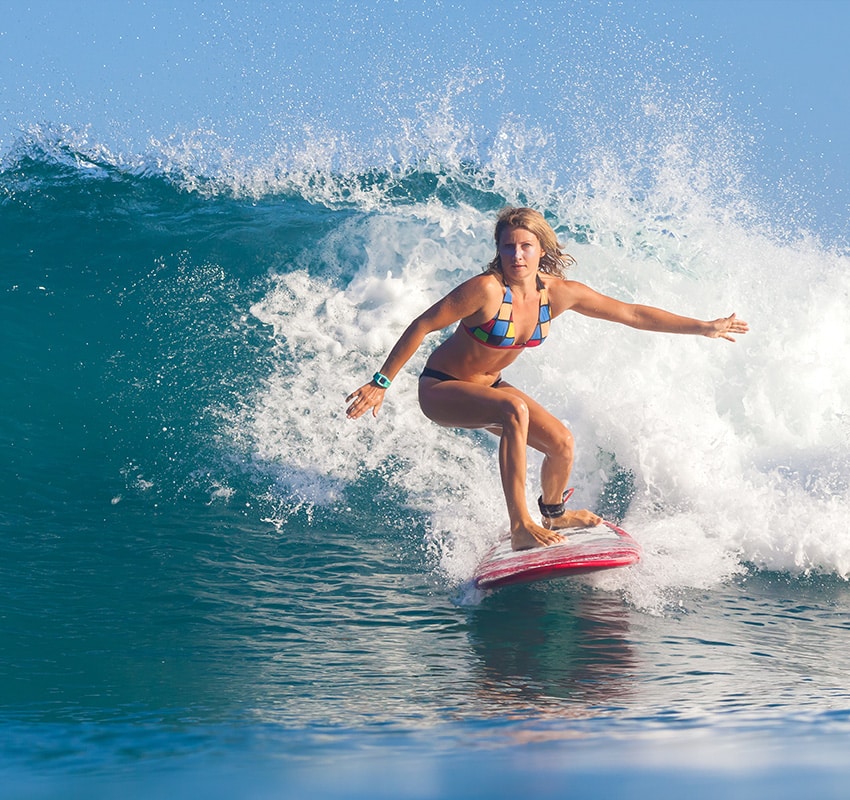Surfing Targeting Solutions
Surfing is a globally popular water sport that requires balance and skill to ride waves on a surfboard. It originated in Polynesian cultures, particularly Hawaii, where it held cultural and spiritual significance. Today, it’s practiced worldwide in oceans, seas, rivers, and even artificial wave pools, captivating people of all ages and backgrounds.
Key Elements of Surfing
Surfing consists of essential components that define the sport, including the surfboard, wave dynamics, core techniques, and different styles that surfers adopt to enhance their experience on the water. Each of these elements plays a crucial role in shaping a surfer’s performance and overall interaction with the ocean.
- Surfboards: Surfboards are central to the sport of surfing and come in various shapes and sizes to suit different surfing styles, skill levels, and wave conditions. Longboards, known for their length and stability, are favored by beginners or those looking for a smooth, relaxed ride on smaller waves. On the other hand, shortboards are designed for speed and quick maneuverability, making them ideal for experienced surfers riding larger, more powerful waves.
- Waves: Waves are the heart of surfing, and they vary greatly depending on the conditions and environment. Ocean swells, usually generated by distant storms, create the best surfing conditions, traveling across vast distances before reaching coastal shores. As these swells interact with the ocean floor, they create different types of waves. Beach breaks occur when waves break over sandy bottoms, providing generally forgiving conditions. Point breaks, however, form when waves wrap around a point of land, often creating longer, more continuous rides. Reef breaks happen over coral or rocky reefs, producing more powerful and hollow waves, which offer thrilling yet challenging experiences for more skilled surfers. Each type of break offers a unique surfing experience, depending on the location and wave behavior.
- Techniques: Mastering various surfing techniques is key for anyone looking to excel in the sport. Beginners first focus on the basics, such as paddling to catch a wave and performing the “pop-up,” the quick motion of transitioning from lying on the board to standing as the wave picks up. As surfers gain more experience, they learn advanced techniques like duck diving, which involves pushing the board under oncoming waves while paddling out. Other techniques, such as tube riding—where a surfer rides inside the hollow part of a breaking wave—and performing aerial tricks add layers of complexity and excitement for those looking to take their surfing to the next level.
Surfing Culture
Surfing is more than just a sport; it embodies a distinct culture with its own language, fashion, music, and philosophy. Rooted in the connection with the ocean, environmental awareness, and a pursuit of the perfect wave, surfing has influenced coastal cultures worldwide. California, Hawaii, Australia, and South Africa are prime locations where surfing has become ingrained in local communities.
As surfing has evolved, it has become a professional sport with competitions worldwide, overseen by organizations like the World Surf League (WSL), where elite surfers compete in diverse wave conditions.
The Appeal of Surfing
Beyond the physical challenge, surfing offers a mental and emotional connection to nature, combining adrenaline-filled moments with a sense of peace and meditation. While it may seem simple, learning to surf can be a time-consuming process, requiring perseverance and patience. The activity’s demands go beyond physical attributes like strength, balance, and endurance; it also involves mental sharpness to read the ocean and anticipate conditions.
What Do You Need to Surf?
Surfing requires a unique blend of physical attributes, including strength, flexibility, balance, and endurance. It also demands mental qualities such as patience, focus, and the ability to read and anticipate natural conditions. Anyone who surfs regularly will have their own surfboard and gear.
Surfboards come in various shapes and sizes designed for specific wave conditions and riding styles. Longboards, typically nine feet or longer, offer stability and are ideal for smaller waves or beginners. Shortboards, usually under seven feet, provide greater maneuverability for more advanced surfers in larger, more powerful waves. Other variations include fish boards, funboards, and gun boards for big-wave surfing.
Although not mandatory, passionate surfers often invest in additional equipment to enhance their surfing experience and safety. Wetsuits, surf wax, leashes, rash guards, surf-specific sunscreen, and even surf helmets in more dangerous conditions are among the common accessorial items sold today.
Who Enjoys Surfing?
Traditionally associated with athletic young males, surfing has broadened its appeal to include a diverse range of participants, from women and children to older adults. In recent years, the sport has attracted professionals who balance their work lives around wave patterns and seasons, integrating surfing into their lifestyle. Many surfers describe it as more than just a sport but a way of life, influencing career choices and social circles.
There are lots of searches and content online for “Surfing” as people look for updates and news about their favorite sport. These websites provide a unique opportunity for companies selling products wishing to reach Surfing fans.
Health Targeting is in our DNA
Since 2012, we’ve been the leader in Health advertising. Healthy Ads can deliver Health Targeting across publisher content in Real Time.
Reach Individuals who play and follow Surfing
We offer the ability to advertise on pages next to articles about Surfing. We know that people looking at content related to Surfing love the sport. This Direct to Consumer Advertising (DTC) is an ideal way to reach your audience.
Surfing Targeting Solutions
Realtime Surfing Targeting
Our Realtime Surfing Targeting option allows an advertiser to run their advertising next to Surfing webpages as the researcher looks at the page. This is the ultimate solution for advertising Surfing equipment and training services. We can run this type of contextual targeting across our own Managed Supply, our Curated Supply, and via a Media Plan via Managed Services.
Popular Surfing Searches
There are thousands of Surfing searches each month. The top twenty searches related to Surfing include;
- Surfing lessons
- Surfboard shaping
- Best surfing beaches
- Surfing gear
- Surfing tips for beginners
- Surfing competitions
- How to surf
- Surfing camps
- Surfing wetsuits
- Surf forecast
- Professional surfers
- Surfing videos
- Surfing magazine
- Stand up paddleboarding
- Surfing safety
- Surfing tutorials
- Surfing holidays
- Women in surfing
- Big wave surfing
- Eco-friendly surf products
Health Targeting Categories
Discover a wide range of Health Targeting Categories based on Contextual Targeting for your next Advertising Campaign or Programmatic Deals. Explore our offerings in Medical Conditions, Healthy Lifestyle, Chronic Diseases, Infections, Sports, and General Health to reach your desired audience at scale effectively.











